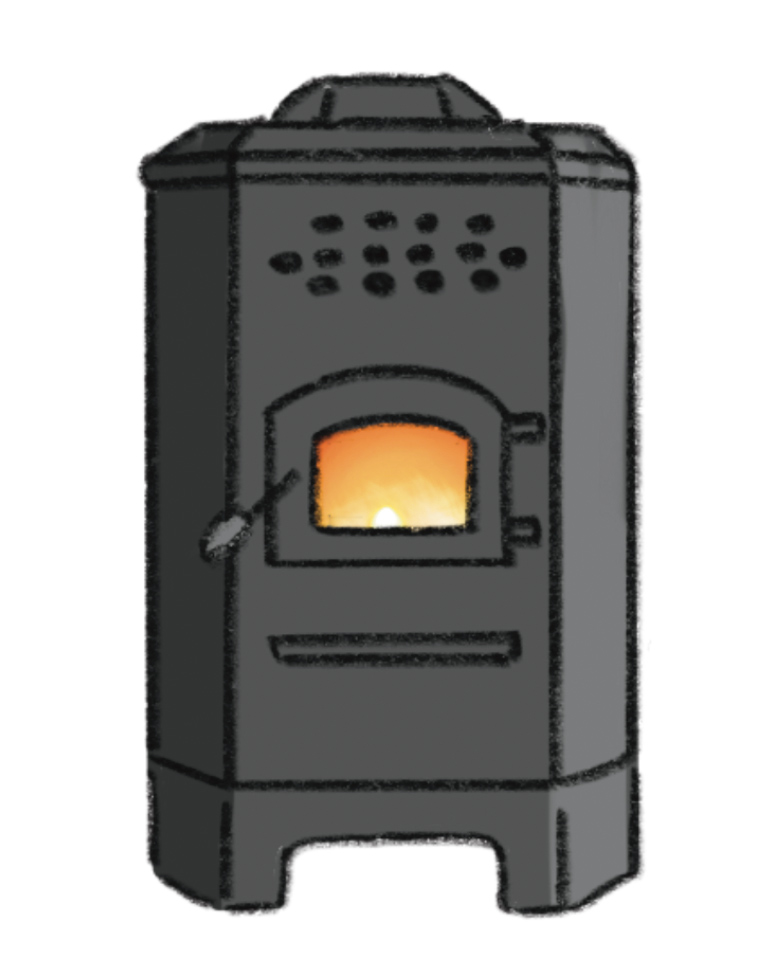By Katy Kelleher
Illustrations by Kelsey Grass
From our January 2023 issue
The Relic
Plenty of old Maine homes and camps already host an old-fashioned woodstove — a no-frills potbelly, an ornate parlor stove, or a classic Franklin stove (named for the Founding Father who designed it). It’s still technically legal to install a vintage cast-iron beauty you bought on the secondhand market (from Craigslist, say, or Uncle Henry’s), but they are neither efficient nor eco-friendly — folks in the industry refer to old non–EPA-certified models as “dirty burners.”


The Contemporary
Stoves manufactured since 1988 tend to be safer, more efficient (less firewood!), and cleaner burning (less smoke, fewer chimney sweepings!). Cast-iron stoves are still an option — they hold heat more readily and spread it more evenly, but they’re a pain to move. Steel stoves are lighter and sleeker — plus, you can install them closer to the walls of a home, so they’re better for tighter spaces.
The Contemporary Mod
While some steel stoves incorporate cast-iron facing for a throwback look, many others take a modernist design approach. Supposedly more stylish than stoves with clawed feet and fussy lattice work, they often look like they’re designed to hold industrial waste. If your heart’s set on some Bauhaus-esque burner, at least opt for a matte finish, because nothing’s sillier than a sleek metal tube glowing bright and shiny next to a pile of homely, honest wood.


The Mini
These bantam, box-shaped stoves (some smaller than a cubic foot, essentially burning kindling) are perfect for little cabins and A-frames, tiny homes, houseboats, wall tents, and the like. You may even encounter one in a well-kept ice-fishing shack. Minimalist and often windowless, they can also be used in a small space in a home, provided proper ventilation is installed.
The Pellet
They burn way efficiently and with super-low emissions, and those are the nicest things you can say about pellet stoves. Pouring compressed-fiber kibbles into an internal hopper and pushing some buttons — can you even call it wood burning? The flame looks weird, the fan makes noise, you don’t get to stack or split anything, and when the power goes out, welp, so does your stove. Avoid.

Read Everything You’ve Always Wanted to Know About Heating With Wood for more woodstove tips.




